The decentralized Hive fund plays a major role in the Hive ecosystem. It is the backbone for the development and funding of the platform. A tool that provides a self-funding mechanism for the chain! Since the creation of the Hive chain, its role has increased massively since there is no centralized entity that will keep developing. The community members are the ones making the development and the DHF is providing the funds.
The DHF has close to 23M HBD now. It holds a lot of HIVE as well but those are not available for use. Since the creation of the Hive blockchain in March 2020, the funds under management in the DHF have grown from under 1M HBD to 23M HBD at this moment.
Let’s take a look at the data.
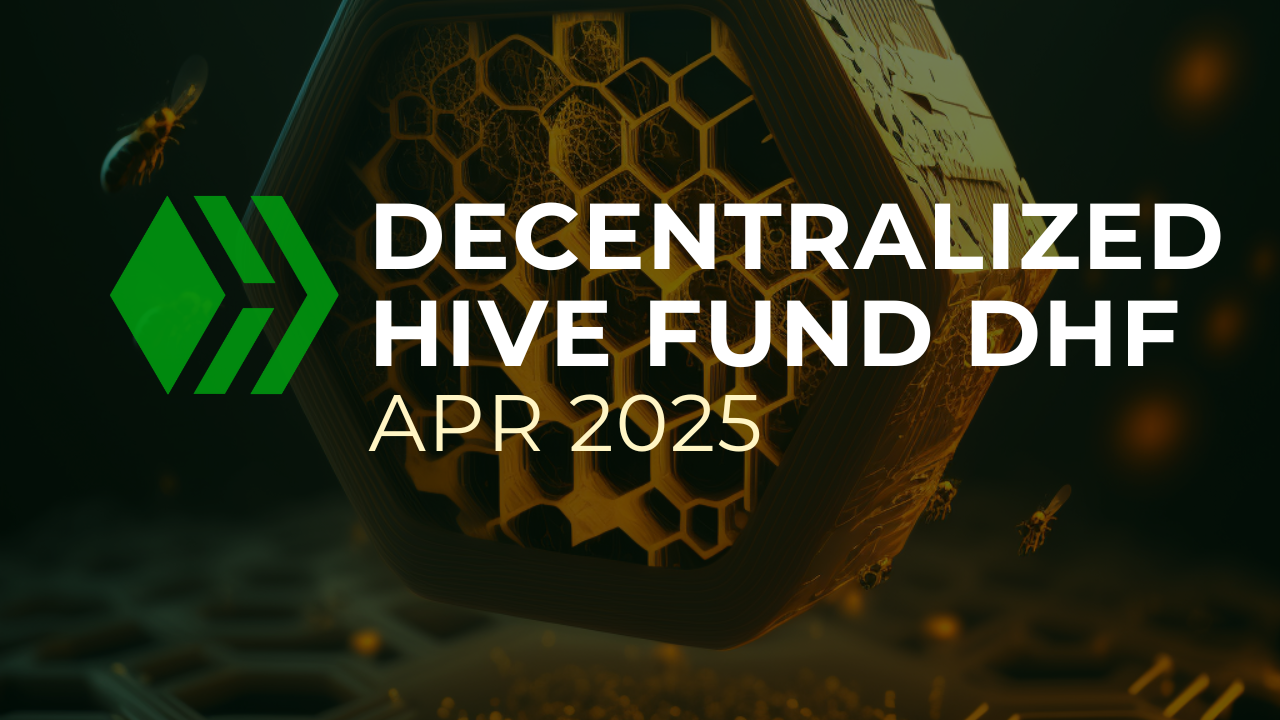
The account that holds the DHF funds is the @hive.fund. Only 1% of the HBD holdings in this account are available for daily payouts and funding. At the moment this budget is around 240k HBD per day. Projects can create proposals for funding and if they are voted out from the community, they will start receiving funds.
There is only one way funds can exit this account and that is for proposal who have been voted from the community to get the funds.
When it comes to funding the DHF, or how funds are added to the DHF there is more than one way.
Funds added to the DHF:
- 10% share of the inflation
- Ninja mined HIVE conversions to HBD
- @hbdstabilizer
- HBD and HIVE transfers to the DHF
- DHF as posts beneficiary
The core source of funding for the DHF is the inflation.
In recent history a few more significant sources for funding were added. The most significant would be the HIVE that was transferred from Steemit Inc and co to the DHF. At the time of the fork in March 2020, there was more than 83M HIVE put in the DHF. In October 2020, this HIVE was put in a slow conversion mode with 0.05% of it being converted to HBD daily, that will continue for multiple years. This is to avoid price shocks. At the moment, we are more than half way through these conversions as there is 36M HIVE in the DHF now.
Another significant source of funds are the transfers to the DHF that are made by the @hbdstabilizer.
This account is receiving fundings for the purpose of stabilizing the HBD. It trades HBD or HIVE on the internal market to maintain the peg and then it sends the funds back to the DHF. Depending on the price of the HBD it sends back HBD or HIVE. When HIVE is sent to the DHF it is instantly converted to HBD at the feed price, making these funds available for use. The stabilizer sends and receives funds, but overall, it has been a net positive. It also acts as post beneficiary for the DHF.
Let’s check the charts.
Funds from Inflation
As mentioned, 10% of the inflation goes to the DHF. Here is the chart.
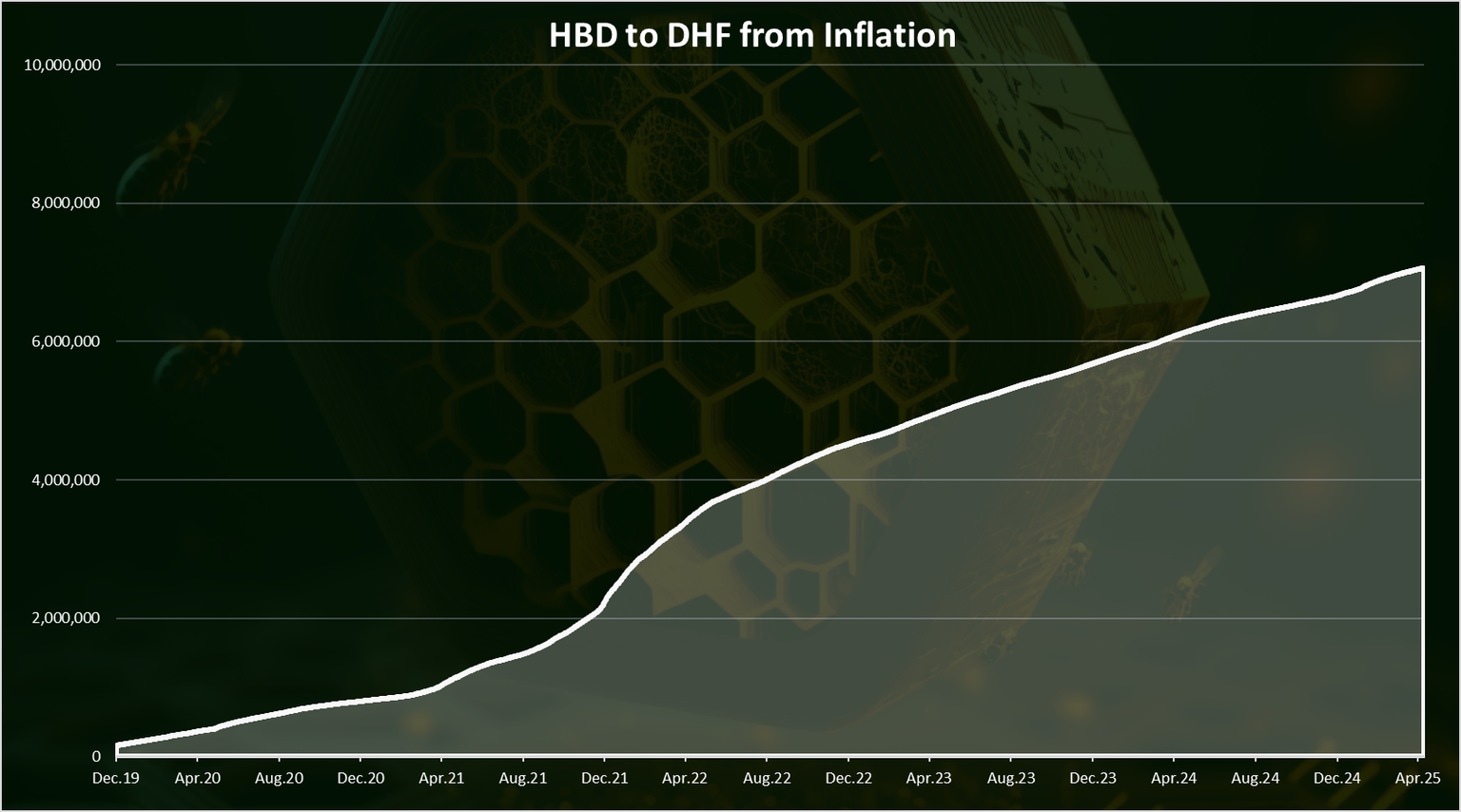
The amount of HBD added in this way is correlated with the HIVE price. 10% in HBD is not the same when HIVE is 2$ or when it is 10 cents.
A total of 7M HBD was added in the DHF from the regular inflation. In 2024 alone there is around 1M HBD added in from the DHF from inflation.
Funds from the Ninja Mined HIVE Conversions in the DHF
Here is the chart for the HBD added in this way.
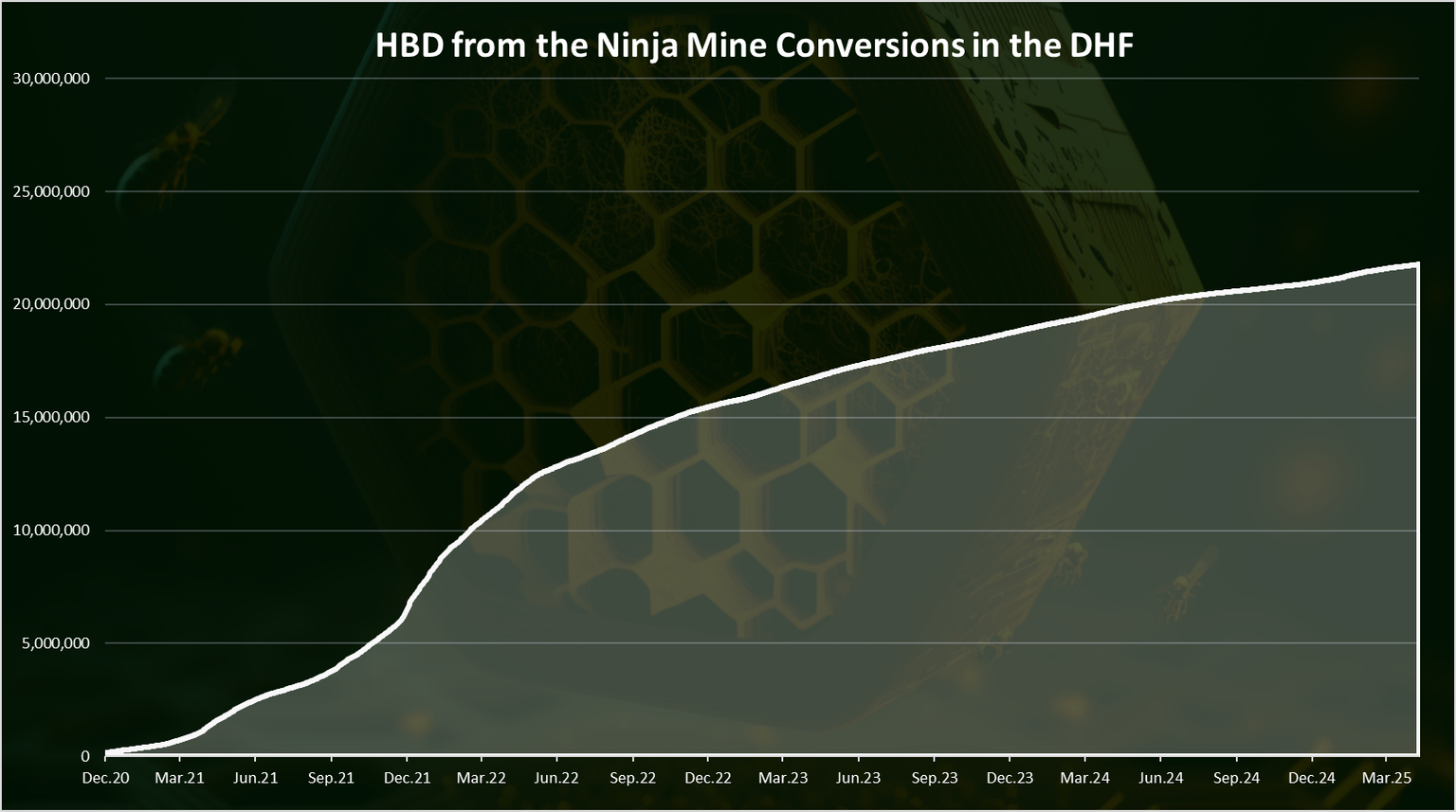
This type of funding started at the end of October 2020. This is when the HF happened that enabled this. These conversions are also heavily dependent on the HIVE price.
A total of 22M HBD was added in the DHF from this source. In 2024 this number is at 2M.
This type of funds will slow down going forward as the amount of daily HIVE converted to HBD is going down. When the conversions started there was around 44k HIVE daily converted and now we are at 18k HIVE daily converted to HBD from the ninja mine. Meaning more than half from the start.
Another significant factor is the price of HIVE. Nevertheless, these funds are limited, and after a few years they will drop significantly.
HBD Added to the DHF from the @hbdstabilizer
Here is the chart for the net HBD added in the DHF from the @hbdstabilizer.
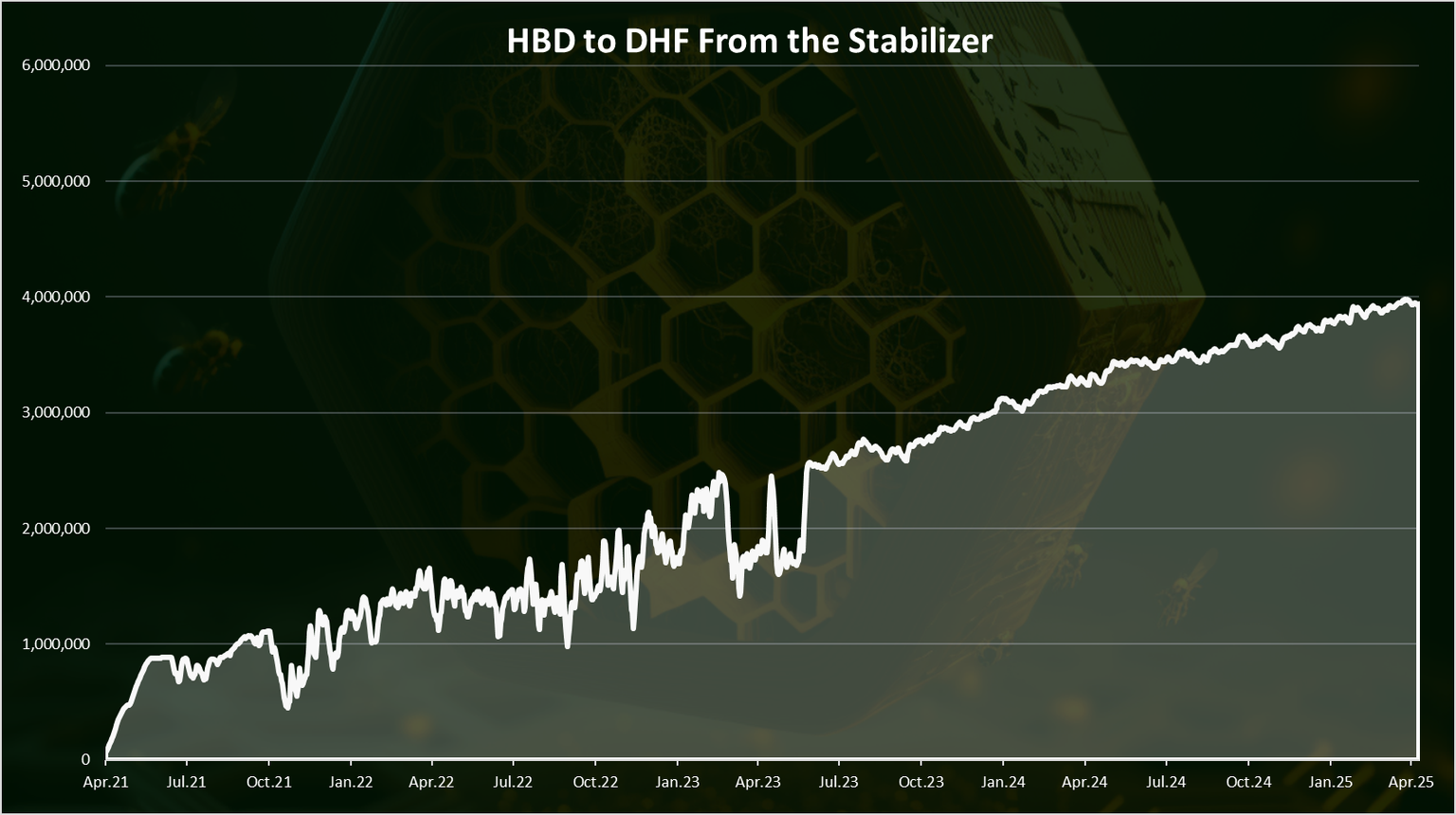
As mentioned, the stabilizer receives HBD from the DHF, for the purpose of stabilizing the HBD peg.
If the HBD price is higher than 1$ then it will sell the HBD on the internal market. If the HBD price is lower than the peg, it will convert the HBD to HIVE and then buy HBD on the internal market.
If the price is at the peg, it will simply return the funds. It sends back funds to the DHF both, in HBD and HIVE. The HIVE that is sent back to the DHF is instantly converted to HBD in the DHF to be available for usage.
The chart above shows the net HBD added in the DHF from the stabilizer. A total of 4M HBD is added in this way in the DHF.
We can notice there has been some volatility in the year, with funds going up and down but in the long run they keep on growing.
When there are spikes in the HBD price, it usually marks a period when more HBD is added in the DHF, and when there are drops in the HBD price, the stabilizer is using more funds and is taking funds out of the DHF.
Note that the stabilizer also receives funds from posts payouts as beneficiary and this has been a significant amount lately since a lot of the top stakeholders allocate there votes there.
Cumulative HBD Added to the DHF
If we combine all the above, we get this.

From the chart above we can notice that the conversions from the ninja mined HIVE in the DHF are the main way for adding funds in the DHF.
A total of 22M HBD or 66% of all the funds in the DHF has been added in this way. The regular inflation is in the second spot with 7M (22%), and then the stabilizer with 4M (12%).
Going forward it is expected the funding from the ninja mine to drop, as those funds are limited and the regular inflation to increase it share.
Payouts from the DHF
As mentioned, this is the only way HBD leaves the DHF. Here is the chart.
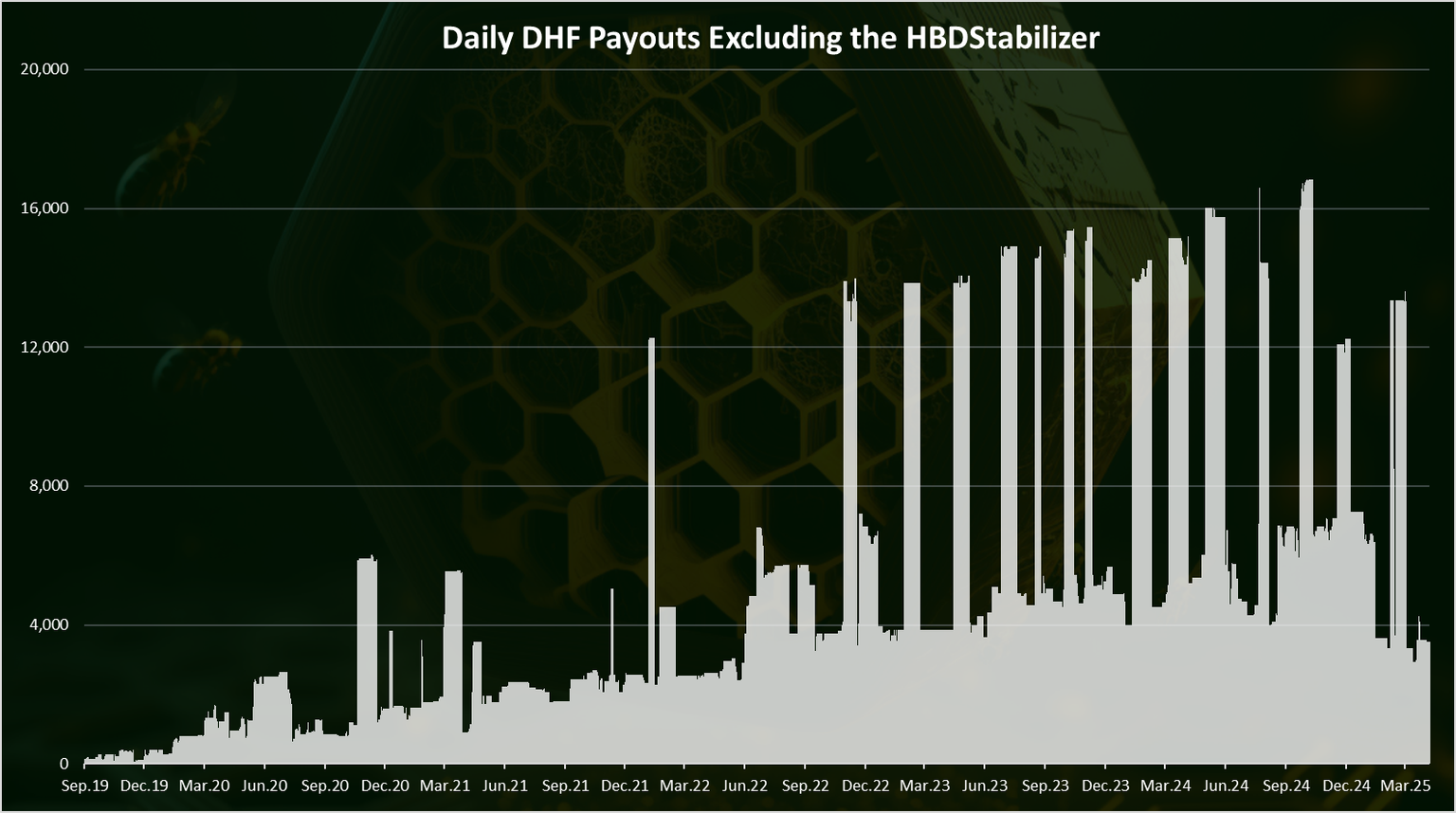
The chart above excludes the payouts to the @hbdstabilizer.
We can notice a few spikes in the payouts, usually when some project with heavy funding in a short period of time, like the valueplan.
On average in the last period around 6k HBD has been paid daily to DHF workers. The spikes that we can see on the chart are usually when the @valueplan account has proposal. This account manages a multiple activities under its umbrella.
On a yearly basis the total payouts look like this:
| Year | HBD |
|---|---|
| 2019 | 30,880 |
| 2020 | 616,784 |
| 2021 | 888,701 |
| 2022 | 1,775,947 |
| 2023 | 2,737,887 |
| 2024 | 3,393,126 |
For 2025 in the first three months there is around 600k HBD funded.
The funding to projects has reached an ATH in 2024 with more than 3M HBD allocated. This might seem a lot, but it is still a small number when compared to some other projects that have much larger development and marketing budgets. On the other hand the market cap of HIVE has been struggling as well so not sure does this development funding is in line with the size of the chain.
HBD Balance in the DHF
Here is the chart.
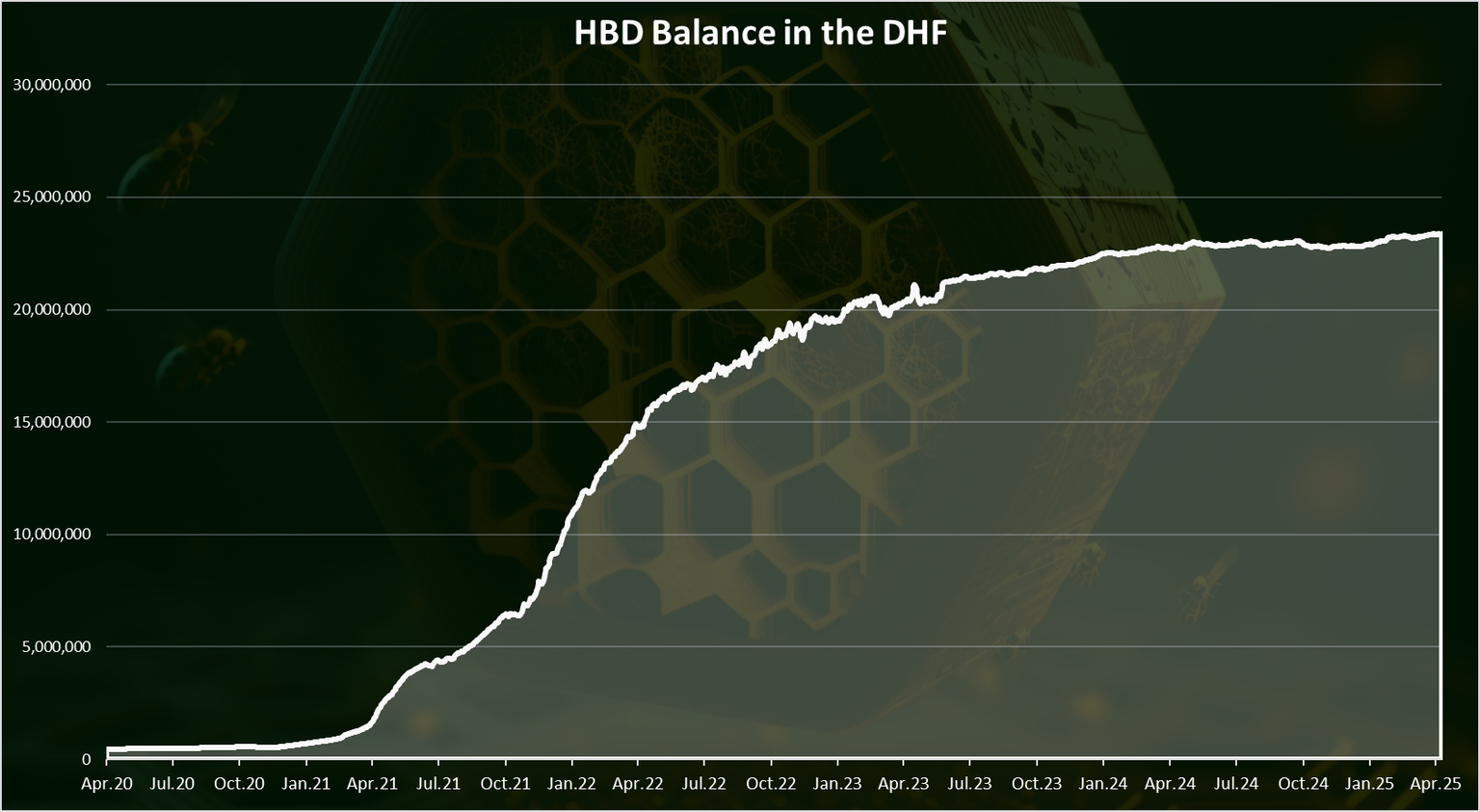
When we add the funds added and removed form the DHF we get the chart above.
A total of 23.3M HBD in the DHF now.
We can see the sharp growth in the funds back in 2021 and 2022. This is mostly because of the ninja mine HIVE to HBD conversions in the DHF and the high HIVE prices at the time.
In 2023 and 2024 this growth slowed down as HIVE prices have dropped and payouts increased.
When we zoom in 2024-2025 we get this:
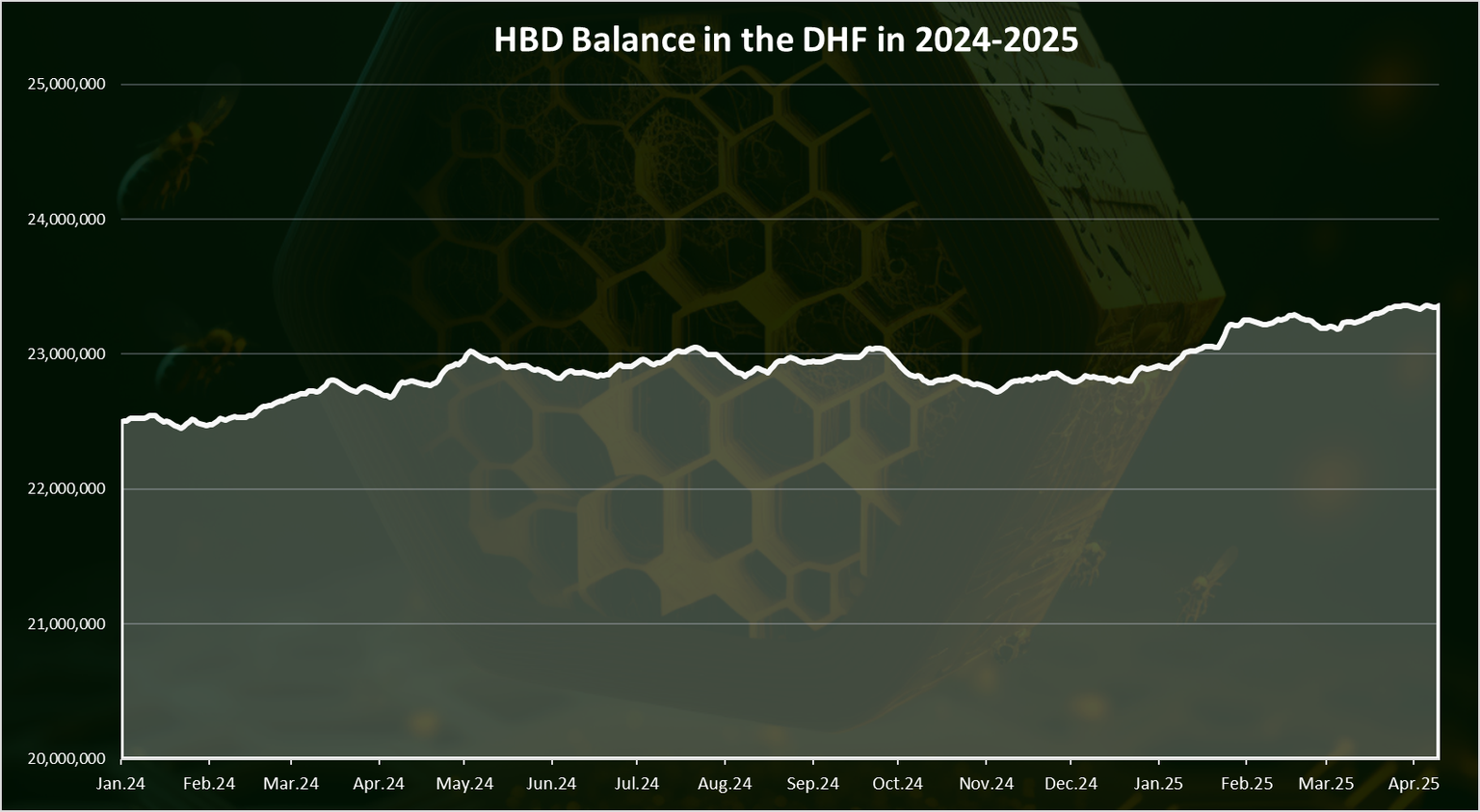
Somewhat stable situation with the HBD in the DHF in 2024 and 2025. Meaning the net inflow and outflow has been almost balanced. Although we can notice that overall there is an increase in the period, starting from 22.5M in 2024 to 23.3M now, close to 1M added.
Accounts Receiving Funding from the DHF in 2025
A total of 19 accounts received funding from the DHF in 2025 so far.
Here is the chart, excluding the stabilizer.

The @valueplan is on the top for the first months of 2025 with 240k HBD, followed by @vsc.network and @keychain.
Other known projects in the top as @splinterlands, @peakd, @ecency etc.
Summary for HBD Added and Removed in the DHF by Category in 2025
Here is the chart.

The Ninja mine conversions are on the top with close to 600k, the regular inflation is on the second spot with 300k, and next is the stabilizer with 150k HBD added to the DHF in 2025.
The payouts to DHF workers are at 631k in the first months of 2025 and are negative on the chart. A net 457k HBD was added in the DHF in 2025.
All the best
@dalz